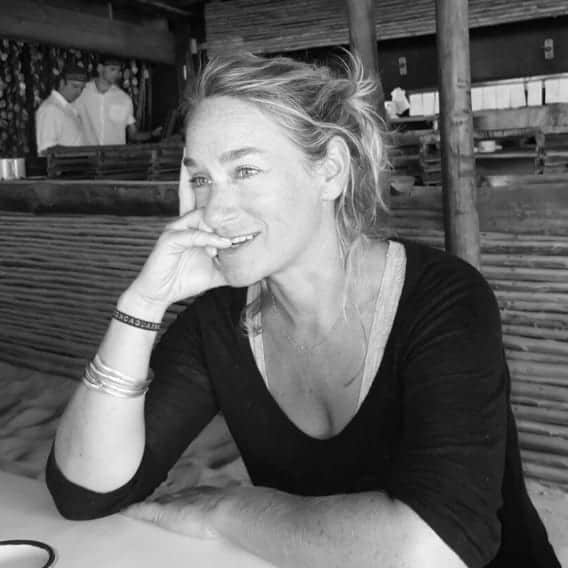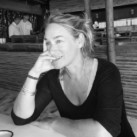
Wendy Lang, founder of Empty Mountain Institute, is a renowned expert and teacher in energy medicine, channeling, mediumship, and space clearing. With over 35 years of experience, Wendy integrates her extensive training in Medical Qigong, Light Body Meditation, and Shamanic Chinese Medicine into her transformative teachings and healing practice. She offers in-person and distance sessions for personal growth, energy clearings for homes and properties, and powerful trainings both locally and internationally. Wendy’s work reflects a lifetime of dedication to the intuitive arts and holistic healing, making her a sought-after teacher, practitioner, and speaker. MysticMag offers an exclusive interview.
The Empty Mountain Institute offers a comprehensive Shamanic Chinese Medicine Practitioner Program. Could you elaborate on the core components of this program and how it integrates shamanic practices with traditional Chinese medicine?
The idea of Shamanic Chinese Medicine evolved from my original practice and teachings in Medical Qigong. Originally, Medical Qigong was a therapeutic practice used in hospitals in China, not just a series of exercises, as it is often seen today. Because the term “Medical Qigong” became more associated with exercise-based practices, I felt the need to differentiate what I teach—a comprehensive three-year program focused on mastery. What I teach stems from the roots of Chinese medicine, which were deeply connected to energy, spirituality, and addressing the whole system of body, mind, and spirit.
This larger scope of healing and energetics led me to rename the practice Shamanic Chinese Medicine. The term “shamanic” reflects its connection to the shamanic roots of Chinese medicine, emphasizing a holistic and spiritual approach. To truly master this practice, one must go beyond the physical and engage deeply with the energetic and spiritual dimensions of healing.
As part of this program, I also teach Light Body Meditation, which helps individuals connect to their intuitive selves and the multidimensional aspects of this work. Mastery, in this sense, requires a deeper level of insight, knowing, and the ability to connect with other realms and dimensions to bring about effective healing. This includes practices in channeling and mediumship, which I also teach, as they are integral aspects of becoming a true master healer.
A master is not simply a doctor or practitioner; a master embodies higher levels of consciousness, awareness, and intuition. For example, before a healing session, we perform a small ritual to open consciousness and invite the presence of higher beings and energies to guide the work. This connection to spirit and higher dimensions is rooted in virtue, with unconditional love as the highest virtue. In fact, virtues play a significant role in Chinese medicine, as each organ is associated with specific virtues. From the beginning of training, students work on releasing old patterns, blockages, and stagnant emotional energies to step into higher flows of energy and embody these virtues.
Becoming a master is not a step-by-step process—it’s an internal journey. Each person brings their unique gifts, skills, and soul essence to the training, and the program supports their development on all levels. Mastery is something you recognize within yourself, and it requires transformation. While we hold high standards for who earns the title of master, many are recognized as master’s candidates as they progress. Those who do achieve mastery have undoubtedly undergone profound personal transformation.
The “Awakening Your Light Body Meditation Series” is a significant part of your offerings. What are the primary objectives of this series, and how does it facilitate personal transformation for participants?
The primary objective of this series is to help individuals expand their consciousness and develop the ability for what we call interdimensional traveling. This involves cultivating flow on multiple levels—creating physical ease in the body, emotional fluidity in the energetic body, and mental flexibility. Beyond these foundational elements, the goal is to empower participants to step into higher states of consciousness and oneness with ease and clarity. Additionally, an essential aspect of this journey is learning how to transmit these elevated states of consciousness, which plays a vital role in the healing process.
Channeling and mediumship are emphasized in your curriculum, with specific courses dedicated to these practices. How do you approach teaching these skills to students, and what ethical considerations are addressed during the training?
Teaching channeling is a crucial aspect of Shamanic Chinese Medicine because it allows individuals to tap into higher sources of information and divine guidance. The process begins by guiding students into very high vibrational realms where they can meet their guides. These guides are what we call “high guides,” and this approach is vastly different from passively waiting in ordinary consciousness for messages to appear. Instead, we actively elevate ourselves to a high state of consciousness where we connect with divine spiritual beings. These beings often include the students’ own guides who have always been with them, offering their support and wisdom.
A key ethical principle of this work is that all channeling must come from a place of unconditional love and non-judgment. The information received is always rooted in a higher perspective and never includes directives like “you must do this” or messages laced with negativity or judgment. Instead, the guidance is uplifting, loving, and profoundly supportive.
Once students have developed a strong foundation in channeling, they move on to mediumship. This progression is intentional, as connecting with high guides ensures that mediumship is performed with the same level of integrity and spiritual alignment. Mediumship often involves delivering messages from those who have passed on, offering closure to the living, and sometimes assisting spirits who are stuck on this plane to transition into the higher realms.
This work naturally extends to space clearing, which involves identifying and addressing energies or entities in physical locations. For example, I was flown to Spain last year to clear a very ancient Hot Springs site. The energy there was heavy and unsettling, making the space unwelcoming. After the clearing, the energy transformed completely, restoring harmony to the location.
Mastery in this work involves being able to navigate all these levels—channeling, mediumship, and space clearing—with precision and discernment. It also requires the ability to turn these abilities on and off as needed, maintaining control and balance in one’s practice and life.
The institute provides various levels of training, including practitioner, therapist, and master’s programs. Can you discuss the progression through these levels and the competencies students are expected to develop at each stage?
The progression through practitioner and therapist levels in this system represents a profound journey of personal growth and skill development, rooted in both healing oneself and learning to heal others. At the practitioner level, the journey begins with a focus on self-work, emphasizing personal healing and self-cultivation. This stage introduces foundational protocols and treatments for various illnesses, but the key is the dual path of helping others while continuing to deepen one’s own healing process.
A major aspect of this level is the development of one’s qi through practices like Qigong. This physical cultivation builds the practitioner’s internal resources and emotional flow, creating a strong foundation for their work with others. Simultaneously, the practitioner is introduced to the core principles of Chinese medicine, blending theoretical learning with experiential healing. The act of working with others at this stage is itself a catalyst for rapid spiritual growth, as it opens deeper insights into the interconnected nature of healing.
At the therapist level, the work intensifies and deepens in scope. This level is marked by a greater emphasis on psychology, exploring the mind-body-spirit connection in more detail. Here, practitioners delve deeper into emotional and spiritual healing, as well as specialized areas such as oncology, gerontology, and gynecology. This broadens their skill set and prepares them for more complex and nuanced healing scenarios.
One of the most profound aspects introduced at the masters level is spirit work, which involves addressing issues at the spiritual level, including clinical exorcisms. This work requires a heightened level of skill and spiritual maturity, as practitioners may encounter situations involving spirits or energetic disturbances that require clearing. For example, during in-person classes in the past, venues with a history of spirit activity presented challenges where the energy of the space had to be cleared for the class to continue. These experiences underscored the importance of mastering these techniques.
With the shift to online teaching, some of the challenges of working in energetically charged physical spaces have been reduced. However, the depth of training and the focus on developing one’s inner resources remain central. Across all levels, the emphasis is on personal development as a foundation for professional growth, creating practitioners, therapists and masters who are not only skilled but also deeply attuned to the holistic nature of healing.
Given the recent shift towards online learning, how has the Empty Mountain Institute adapted its programs for virtual platforms, and what have been the challenges and successes in delivering shamanic and energetic teachings remotely?
Our new class structure has been a fantastic way to make the training more accessible and engaging for students around the world while maintaining the depth and integrity of the program. Instead of having five intense in-person classes that ran from 9 AM to 6 PM, we’ve broken them into four-hour sessions. This change works so much better for everyone. For example, my 9 AM class might be 5 PM or 6 PM in Europe, so students there can participate after their workday. It’s been great to see how well this format fits different time zones.
Breaking up the sessions into shorter, four-hour blocks has made a big difference. Students stay focused and engaged, and they don’t feel as overwhelmed as they might during an entire day of training. It’s also allowed us to dive straight into distance healing, which is something we used to touch on later. Now, students get to experience the magic of distance healing right away, and they’re usually blown away by how powerful it is. Working with each other remotely from the start builds their confidence and shows them what’s possible.
We’ve also created WhatsApp groups for each class, which has been such a great addition. It gives students a space to connect, support each other, and practice together outside of class. Even though the classes are online, these groups help create a sense of community and collaboration, which is so important.
All of our classes are recorded, so students can review them anytime—whether they miss a session or want to prepare for exams. Having access to these recordings has been incredibly helpful for students who need a little extra time to revisit the material or balance other commitments.
The program culminates in a live seminar, which I absolutely love. It’s amazing to finally meet everyone in person, see how their practice has evolved, and work together face-to-face. This live component really brings everything together and allows us to deepen the connections we’ve built throughout the course.
Overall, this new structure has made the program more flexible, accessible, and impactful. It’s wonderful to see how well it’s working for everyone, and I’m so glad we’ve created an experience that supports students on every level—practically, emotionally, and spiritually.
If you would like to find out more about Wendy Lang, please visit https://www.emptymountain.com/



